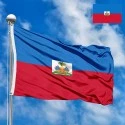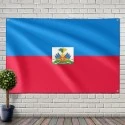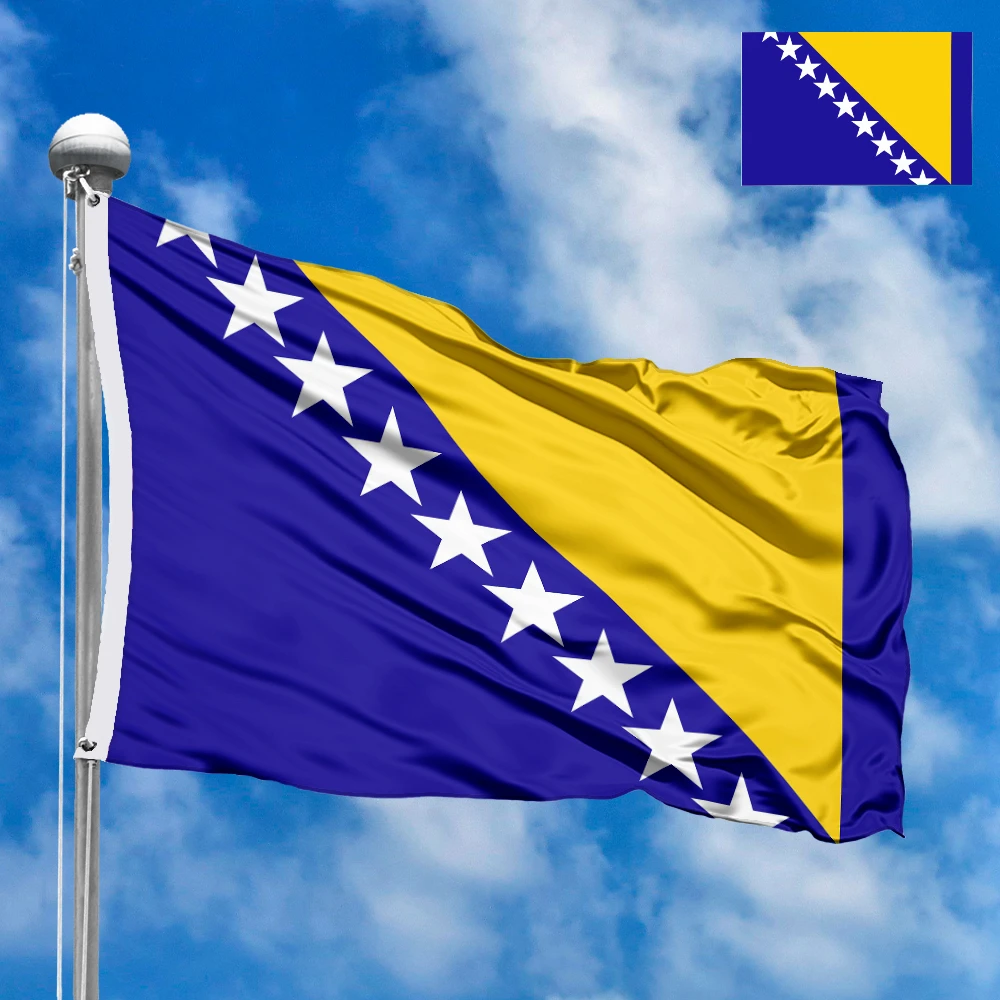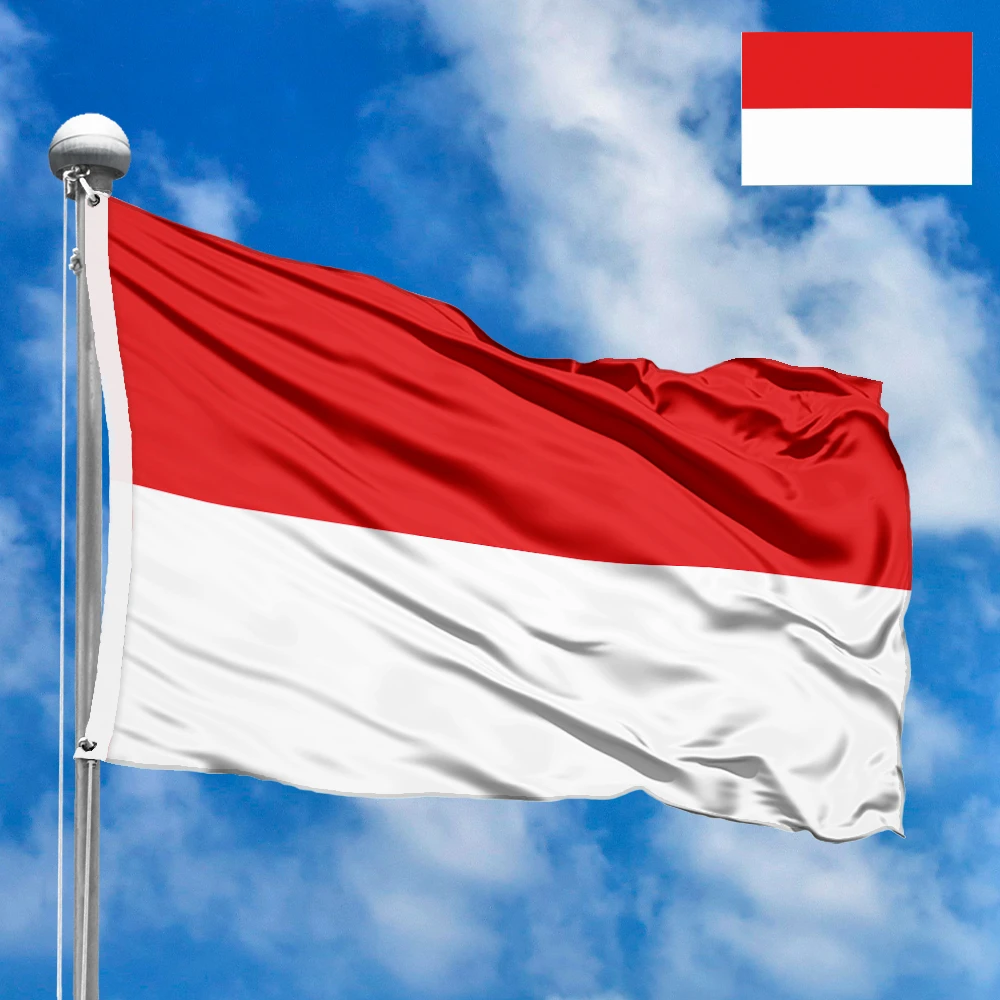The national flag of Haiti is a powerful and vibrant emblem that tells the story of a nation born from revolution. Its design is deeply intertwined with the country's struggle for independence, symbolizing the unity, courage, and enduring spirit of the Haitian people. The flag is a source of immense national pride, serving as a constant reminder of the world's first successful slave rebellion and the establishment of the first free Black republic.
A Detailed Look at the Flag's Design and Symbolism
The flag of Haiti features a simple yet profoundly symbolic design: a horizontal bicolour with two equal stripes. The top stripe is a deep blue, and the bottom stripe is a vibrant red. Centered on a white square in the middle of the flag is the National Coat of Arms of Haiti. This combination of colours and the intricate emblem creates a unique and instantly recognizable national symbol, rich with historical meaning.
Each element of the flag carries a significant message, reflecting the core principles of the Haitian nation:
-
Blue: The blue stripe symbolises liberty and justice. Historically, it was also meant to represent the country’s Afro-Haitian population, which was instrumental in the fight for freedom.
-
Red: The red stripe represents courage, sacrifice, and the blood shed by the heroes of the Haitian Revolution. It traditionally symbolised the mulatto population who fought alongside the Black slaves to secure independence. The two colours together, with the white stripe of the French colonial flag removed, signify the unity of these two groups.
-
The Coat of Arms: The detailed coat of arms, placed on a white square to represent peace and unity, is a masterpiece of heraldic art. It features:
-
The Royal Palm: A central palm tree, a symbol of independence and freedom, topped with the Phrygian cap, an ancient symbol of liberty.
-
Military Trophies: The palm tree is flanked by various military symbols, including cannons, rifles, drums, and anchors, which represent the nation's readiness to defend its hard-won independence.
-
The National Motto: A white ribbon at the base of the coat of arms bears the national motto in French: "L’Union Fait La Force" (Unity Makes Strength). This powerful phrase underscores the belief that only through unity can the nation achieve strength and stability.
-
Broken Chains: On older versions and some modern interpretations, broken chains are depicted, symbolising the end of slavery.
The History and Adoption of the Flag
The history of the Haitian flag is inseparable from the Haitian Revolution (1791–1804). The legend of its creation dates back to 1803. Revolutionary leader Jean-Jacques Dessalines is said to have taken a French tricolour flag, ripped out the white stripe (which symbolised the colonial oppressors), and asked his goddaughter, Catherine Flon, to sew the remaining blue and red stripes together. This act was a powerful declaration of the new nation's independence and a symbol of the alliance between the Black and mulatto populations in their fight for freedom.
The flag has undergone several changes throughout its history, notably during the Duvalier regime, which adopted a black and red vertical flag. The current design, with its horizontal blue and red stripes and the coat of arms, was officially reinstated on February 25, 1986, following the end of the Duvalier dictatorship. This act symbolised the nation's return to its revolutionary roots and republican ideals.
Meaning and Significance for Citizens
For the people of Haiti, the flag is more than just a national symbol; it is a sacred emblem of their fight for freedom. It represents the triumph of the world's first and only successful slave revolution, which served as a beacon of hope for all oppressed peoples. The flag is proudly displayed on government buildings, schools, and homes, especially during national holidays such as Independence Day on January 1st and Flag Day on May 18th. The latter is one of the most important national holidays, celebrated with parades, cultural events, and ceremonies that reaffirm the sense of unity and national pride. The motto "Unity Makes Strength" is not just a phrase but a fundamental principle that guides the nation's aspirations for a better future.
Interesting Facts
-
Haiti is one of a handful of countries in the world whose national flag features firearms, including cannons and rifles.
-
The flag without the coat of arms is considered the civil flag and is used by citizens and on merchant ships. The flag with the coat of arms is the state flag and is used by the government and military.
-
The legend of the flag's creation by Jean-Jacques Dessalines and Catherine Flon is so significant that May 18th is officially celebrated as Flag and University Day.
-
The colors of the flag were originally vertical under Dessalines's rule but were changed to a horizontal design under his successor, Alexandre Pétion, to distinguish it from the flags of other former French colonies.
-
The flag is a source of immense pride for Haitians, both at home and abroad, representing their unique identity and their struggle for dignity and self-determination.
In the demonstration images, full-size flags are shown with proportions of 2:3, and hand-held flags with proportions of 1:2.












 Waving flag
Waving flag
 Sizes:
Sizes:
 Round flag
Round flag
 Sizes:
Sizes:
 Rectangular flag 2:3
Rectangular flag 2:3
 Sizes:
Sizes: